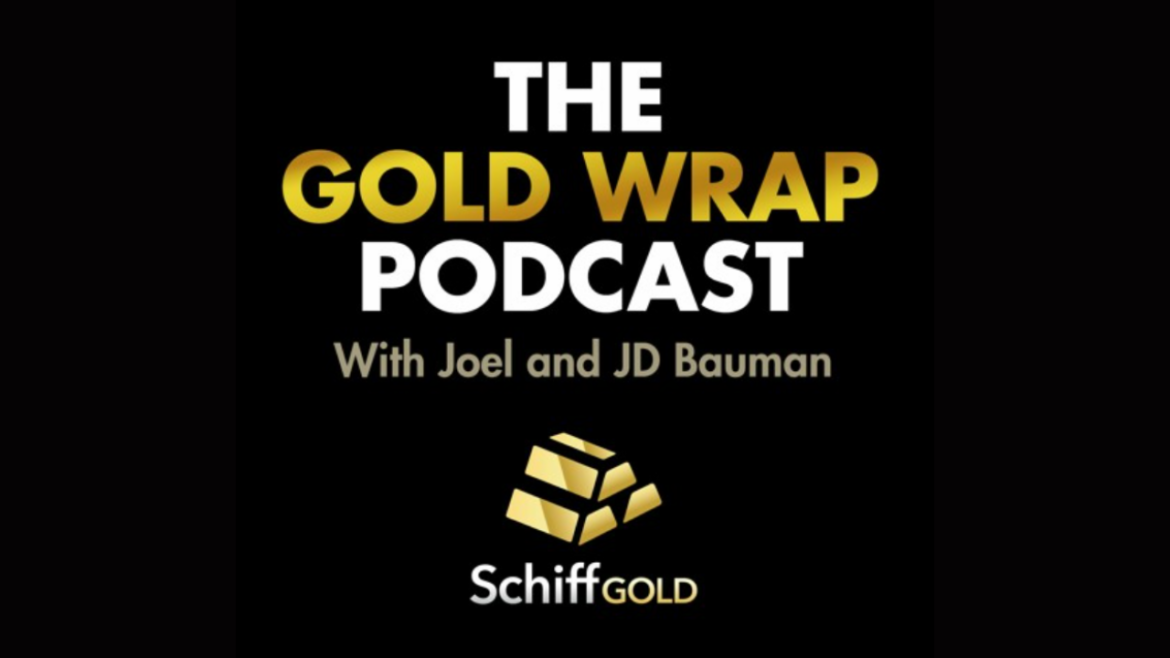Gold has all the potential to go unprecedentedly high. But silver will be gold on
Site:
Precious metals news
The Biden Administration’s Consumer Financial Protection Bureau (CFPB) just issued a proposal to ban medical debt from factoring into your credit score. But for free-money socialists and their Keynesian bedfellows, this doesn’t go nearly far enough: short of canceling medical debt entirely, nothing else is acceptable.
 METALS & TRUMP BITCOIN MARKET UPDATE JUNE 16th: Bullish Setup For Silver? And Why Is Trump Now Backing Bitcoin Mining?
METALS & TRUMP BITCOIN MARKET UPDATE JUNE 16th: Bullish Setup For Silver? And Why Is Trump Now Backing Bitcoin Mining?June 16, 2024
Why did Donald Trump totally reverse his stance on Bitcoin as a "Scam" and now totally support the Bitcoin Mining Industry? Well, it seems to come down to Big Money and much-needed votes. Also, are we seeing another Bullish Setup in the silver price...
While the efficiency of the free market is very often accepted in the realm of industry, the environment is often used as an example of the government's necessary role in the economy. Public goods are used as an example of the problems with market allocation. Short-sighted business owners are apparently unable to see or account for the full effects of their actions, and they end up damaging the environment irreparably. Much more often, government programs are both improperly motivated and ineffective at preventing pollution. However, strong and transparent private property rights may be the most effective safeguard of the environment.
Investing in anti-fragile assets like gold and Bitcoin is becoming increasingly attractive as we face an era of rising inflation, economic volatility, and geopolitical unrest. Despite political uncertainties and potential tax increases in the UK, particularly affecting pensions and capital gains, gold and Bitcoin offer resilience. Experts from Ruffer and ByteTree highlight that after decades of stability, the coming years will demand investments that can withstand economic and political turmoil.
U.S. Treasury yields fell on Friday, reflecting easing inflation indicated by recent data. The 10-year Treasury yield dropped to around 4.225%, while the 2-year yield was slightly higher at 4.694%. This decline follows lower-than-expected producer price index (PPI) data, which showed a 0.2% decrease in May, and other indicators like high jobless claims and flat consumer prices. Investors are increasingly confident about potential interest rate cuts by the Federal Reserve, further boosting Treasury prices.
Federal Reserve Bank of Cleveland President Loretta Mester finds the recent softer inflation data encouraging but wants to see a few more months of similar data before considering interest rate cuts. Mester emphasizes the need to observe declining inflation and short-run inflation expectations alongside labor market conditions before deciding on rate reductions. The Fed has projected only one rate cut this year, maintaining the current rate range of 5.25% to 5.5%. Mester is set to retire at the end of the month and will be succeeded by Beth Hammack from Goldman Sachs.
 Thailand Pension Fund Bets on Gold and Commodities to Offset Weak Stocks
Thailand Pension Fund Bets on Gold and Commodities to Offset Weak StocksJun 14, 2024 - 09:54:36 EDT
Thailand's Government Pension Fund (GPF) anticipates gains from gold, commodities, and private equity to offset weak domestic stocks, expecting a portfolio return of over 3% in 2024, up from 1.5% in 2023. The fund has increased its holdings in these assets to hedge against inflation and geopolitical instability, while also expanding investments in overseas bonds, stocks, and property to improve performance amid low local returns.
Gold prices remained stable in Asian trade on Friday, as a stronger dollar, driven by the prospect of fewer U.S. interest rate cuts, countered optimism from easing inflation. Spot gold and gold futures each saw a slight rise of 0.1%, but the yellow metal is still recovering from recent declines due to high interest rates. The Federal Reserve's projection of only one rate cut in 2024, versus the previously anticipated three, has pressured gold and other metal prices, which were trading within narrow ranges.
China is expected to respond cautiously to the EU's new tariffs on Chinese electric cars, wary of provoking a trade war. The EU's move to impose tariffs of up to 48% on Chinese vehicles aligns with similar actions by the US and other countries. Beijing aims to avoid aggressive retaliation that could unify Western nations against it and hinder President Xi Jinping's efforts to promote strategic autonomy in Europe. Analysts predict China will target specific agricultural products in its retaliation, such as cheese and pork, to avoid broader economic conflict.
Oil prices are set for their strongest weekly gain in months, driven by rising demand for key fuels like gasoline and diesel. Brent crude futures have increased by 0.5% in London, with a weekly gain of 4.4%. Despite a robust fuel market, the overall crude outlook is clouded by reduced consumption growth forecasts from the International Energy Agency and concerns over China's economic slowdown and potential oversupply from the US and Americas.
This week flashed early warning signs of a recession as gold and silver prices rose yet again. Despite an inflationary environment, non-essential goods are getting price cuts as the Fed reassures the public that rates won't go higher.
 PLOT THICKENS... IS THE FED QT MONETARY TIGHTENING A MYTH?? What About The Massive Decline In The U.S. Treasury Market Value
PLOT THICKENS... IS THE FED QT MONETARY TIGHTENING A MYTH?? What About The Massive Decline In The U.S. Treasury Market ValueJune 14, 2024
It seems that everyone believes the Fed QT Monetary Tightening is reducing the money supply, but I believe there is more going on behind the scenes. Also, why haven't any economists or MSM reported on the massive decline in the value of the U.S. Treasury Market...
The Federal Government publishes the spending and revenue numbers on a monthly basis. The charts and tables below give an in-depth review of the Federal Budget, showing where the money is coming from, where it is going, and the surplus or deficit.
Join Mike Maloney and Chris Martenson in this eye-opening interview as they delve into the crucial importance of tangible assets...
Inflation breeds desperation, and desperation breeds crime.As central banks in Europe and Canada cut interest rates, and expectations remain that the Fed will wait to cut until at least September if it cuts this year at all, our endlessly-wise global central bankers, the benevolent all-knowing stewards of the global economy, can’t seem to agree on what steps are needed to cool inflation back down to reasonable levels.
Bank of America forecasts a bullish outlook for silver prices, predicting an increase to an average of $35/oz by 2026 due to expected cessation of central bank rate hikes and rising investment in precious metals. Despite current price strength, further growth is anticipated, driven by positive trends in the gold market. However, pure silver mining equities are hard to find as silver is often mined alongside other metals. BofA recommends Pan American Silver and Wheaton Precious Metals for North American investors seeking silver exposure.
Singapore is set to become a leading gold hub as the gold market shifts eastward, driven by rising gold consumption in Asia and the proximity to central banks that are actively increasing their gold reserves. The World Gold Council's Shaokai Fan highlighted Singapore's strategic position and stability, predicting it could rival London and New York as a central bank gold vaulting hub. Factors include Singapore's political stability and tax incentives on investment gold.
Citi analysts predict that gold prices could reach $3,000 per ounce within the next 12 months due to strong physical demand, central bank purchases, and favorable macroeconomic factors. Despite potential fluctuations, prices are expected to stay above $2,000-2,200 per ounce, with significant increases anticipated in 2025. Factors supporting this forecast include resilience amid a strong US dollar and high interest rates, potential US economic slowdown, and sustained central bank demand.
The U.S. government reported a $347 billion budget deficit for May, significantly higher than the $240 billion deficit a year earlier. This increase is attributed to pre-payment of some June benefits and higher expenses for interest, Social Security, and defense. May's outlays rose 22% from last year to $671 billion, partially due to early benefit payments. Receipts for the month were $324 billion, up 5% from May 2023. The fiscal year deficit now stands at $1.202 trillion, a 3% increase from the previous year.
Jun 13, 2024 - 11:00:20 EDT
The Federal Reserve announced it is keeping its key interest rate unchanged to combat high inflation, which, while easing, remains elevated. The economy continues to grow, with strong job gains and low unemployment. The Fed now forecasts only one rate cut in 2024, revising previous expectations of multiple cuts, as it aims to reduce consumer demand and control price growth.











